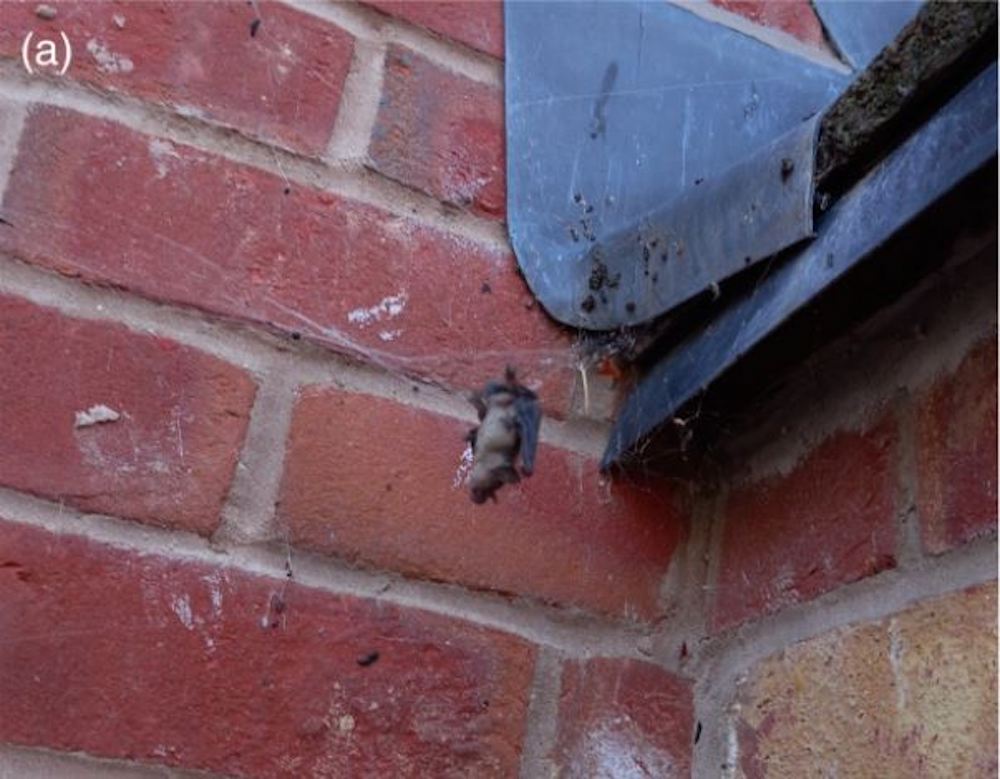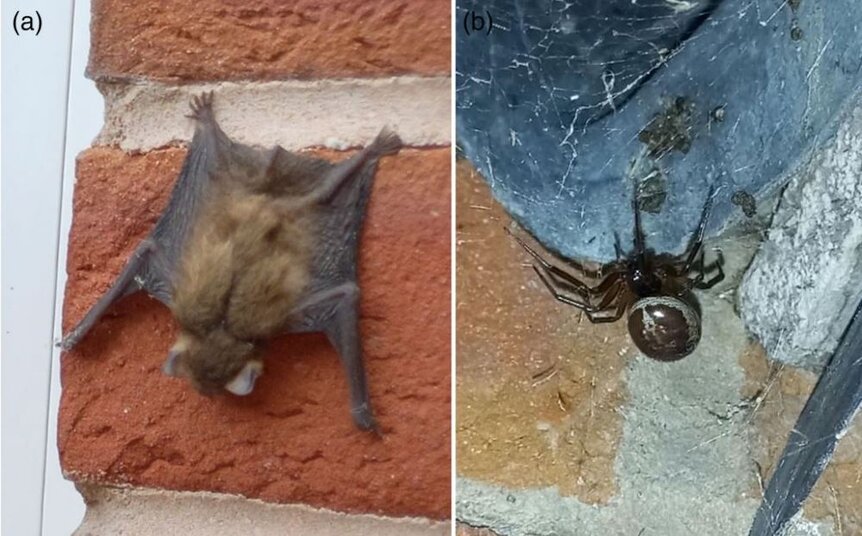Create a free profile to get unlimited access to exclusive videos, sweepstakes, and more!
Bats endure a slow and lingering death in the webs of false widow spiders
With great power, comes food on the fly.

Spider-Man and Batman exist in different comics universes, so it’s unlikely they would ever cross paths, outside of the occasional crossover event. In the real world, however, their animal counterparts do sometimes inhabit the same spaces, and despite the drastic difference in size, in a fight, the spider wins.
At least, that’s the way things played out in the attic of a home in Shropshire, England. Wildlife artist Ben Waddams has a nest of bats living in his attic and noticed a solitary spider had built a web just beneath the entrance to the roost. At first glance, that might not seem to be a problem, bats are comparatively large and aren’t a spider’s typical prey. So, scientists were surprised to find the spider capturing and feeding on the bats.
John Dunbar from the Venom Systems & Proteomics Lab at the National University of Ireland Galway, and colleagues, investigated the unusual interaction. Their findings were published in the journal Ecosphere.
The spider was identified as a Noble False Widow, and the bats were one of two Pipestrelle types, species which are protected in the area. This is the first documented case of a false widow feeding on a mammal anywhere in the world.
Due to the location of the web, adjacent to the roost entrance, it appears the bats were caught in the webbing while attempting to return to the roost. Pipestrelle bats may be more susceptible to capture in webbing than other species, owing to the frequencies they use for echolocation. Higher frequency echolocation calls can ping off spider silk, but the calls of Pipestrelle bats sit between 36 and 72 kHz and might not be well suited for identifying the presence of webs.
"Bats that echolocate at higher frequencies than approximately 36 through 72 kHz may be better at detecting spider webs and enable them to avoid colliding with them," Dunbar told SYFY WIRE.
False widows, on the other hand, are well adapted for capturing large prey. They belong to the family Theridiidae, the same family to which true Black Widows belong, which is responsible for a full 34% of all mammal predation by spiders. Additionally, their webbing is particularly strong as compared to other spider species and is more than capable of entangling comparatively large prey. Once captured, the spiders hoist their prey and suspend them above the ground before wrapping them in silk and paralyzing them using neurotoxic venom.
"Observations of the Noble False Widow spider previously preying on a lizard in Ireland and other much smaller species of false widow spiders preying on lizards and snakes, it seems reasonable to speculate that similar events may have occurred but went unnoticed. Given the continued range expansion and density globally, we should expect to see an increase in such events," Dunbar said.
Waddams observed the spider capturing two bats, one after another, on two sequential evenings. The first was a pup which might have had the worst luck in the history of bats. Considering its age, scientists involved with the paper believe it might have been the first night the bat flew out of the roost. By the time it was observed, its limbs were completely immobilized, and its shriveled and discolored body indicated the spider had been feeding on it. By the next morning, the pup had been removed from the web.
It's not believed that the spider disconnected it or that there was any secondary predation. Instead, it was likely knocked from the web by the thrashing of the second captured bat. A new bat was found in the web on the second night, this time an adult. The adult was still alive and there was no indication the spider had yet attempted to feed. The decision was made to release the bat from the web. It was placed on the wall near the entrance to the roost and eventually returned home.
"While this is the first case of this species preying on mammals, it is not unusual for false widows and true black widow species to subdue small vertebrates hundreds of times their size," Dunbar said. "In the past, they have been documented preying on mice, rats, voles, shrews, frogs, lizards, and snakes."
This hunting behavior might not be cause for concern if it weren’t for the nature of the two species. As previously mentioned, Pipestrelle bats are a protected species and false widows are invasive. Hailing originally from Macaronesian archipelagos several thousand kilometers from England, they have since spread not just throughout Europe but also Asia and North and South America.
The full ecosystem impact of their spread hasn’t yet been investigated, but the predation of these protected species doesn’t bode well. Scientists are considering plans to mitigate the negative impact on world ecosystems.
The battle between spider and bat might make for a thrilling comic book punch up, but in the real world, it’s an additional pressure levied on an already challenged species. Without intervention, these spiders could be responsible for a truly dark night for bats.



























